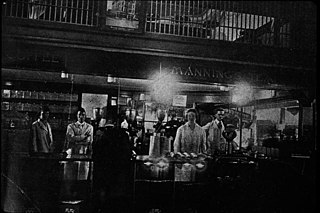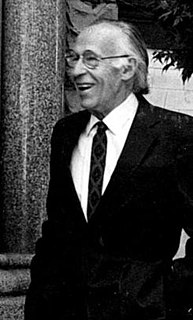
The National Register of Historic Places (NRHP) is the United States federal government's official list of districts, sites, buildings, structures and objects deemed worthy of preservation for their historical significance. A property listed in the National Register, or located within a National Register Historic District, may qualify for tax incentives derived from the total value of expenses incurred in preserving the property.

The Lake Washington Ship Canal, which runs through the city of Seattle, connects the fresh water body of Lake Washington with the salt water inland sea of Puget Sound. The Hiram M. Chittenden Locks accommodate the approximately 20-foot (6.1 m) difference in water level between Lake Washington and the sound. The canal runs east–west and connects Union Bay, the Montlake Cut, Portage Bay, Lake Union, the Fremont Cut, Salmon Bay, and Shilshole Bay, which is part of the sound.

Capitol Hill is a densely populated, residential district in Seattle, Washington, United States. It is one of the city's most prominent nightlife and entertainment districts and is the center of the city's LGBT and counterculture communities.

The Montlake Bridge is a double-leaf bascule bridge that carries State Route 513 over Seattle's Montlake Cut—part of the Lake Washington Ship Canal—connecting Montlake and the University District.

Historic districts in the United States are designated historic districts recognizing a group of buildings, properties, or sites by one of several entities on different levels as historically or architecturally significant. Buildings, structures, objects and sites within a historic district are normally divided into two categories, contributing and non-contributing. Districts greatly vary in size: some have hundreds of structures, while others have just a few.

In the law regulating historic districts in the United States, a contributing property or contributing resource is any building, object, or structure which adds to the historical integrity or architectural qualities that make the historic district, listed locally or federally, significant. Government agencies, at the state, national, and local level in the United States, have differing definitions of what constitutes a contributing property but there are common characteristics. Local laws often regulate the changes that can be made to contributing structures within designated historic districts. The first local ordinances dealing with the alteration of buildings within historic districts was in Charleston, South Carolina in 1931.

Manning's Cafeterias was a chain of about 40 cafeteria-style restaurants in nine western U.S. states. The chain started in Seattle's Pike Place Market in 1908; that location became Lowell's in 1957 and is still in operation. Another one in Ballard, a suburb of Seattle, was constructed in 1964 in the futuristic Googie architectural style, reopened as a Denny's in 1984 and was designated a City of Seattle Landmark by the Landmarks Preservation Board on February 20, 2008.
The City of Omaha Landmarks Heritage Preservation Commission, established in 1977, is the Omaha city government's a nine-member board responsible for recommending official Omaha Landmarks to the Omaha City Council. The Landmarks Heritage Preservation Commission is that was established by ordinance in 1977 to review and recommend to the City Council on all matters pertaining to the designation of individual buildings, sites, objects, or entire districts of local historical significance. The commission is staffed by the Landmarks Division of the Omaha Planning Department.
Los Angeles Historic-Cultural Monuments are sites in Los Angeles, California, which have been designated by the Los Angeles Cultural Heritage Commission as worthy of preservation based on architectural, historic and cultural criteria.

Designated a Seattle, Washington Landmark, the Norvell House was built in 1908 and is a late example of the Swiss chalet style of Architecture. Located in the community of Ballard, in the vicinity of Sunset Hill, it sits on its original-sized lot with impressive heritage trees and retains its flanking carriage house.

The Historic Districts Council (HDC) is a New York City-based 501(c)3 nonprofit organization that serves as the advocate for New York City's historic buildings, neighborhoods, and public spaces.

This is a list of the National Register of Historic Places listings in Seattle, Washington.

This is a list of the Davenport Register of Historic Properties in Davenport, Iowa, United States.

The architecture of Seattle, largest city of the US Pacific Northwest, includes aspects that predate the mid-nineteenth century arrival of the area's first settlers of European ancestry, and has reflected and influenced numerous architectural styles over time. As of 2015, a major construction boom continues to reconfigure Seattle's Downtown, as well as neighborhoods such as Capitol Hill, Ballard and, perhaps most dramatically, South Lake Union.

The Neptune Theatre, formerly known as U-Neptune Theatre, is a performing arts venue in the University District neighborhood of Seattle, in the U.S. state of Washington. Opened in 1921, the 800-seat venue hosts a variety of events, including dance and music performances, film screenings, and arts education. Prior to a renovation in 2011, the theater was primarily home to classic films.
































